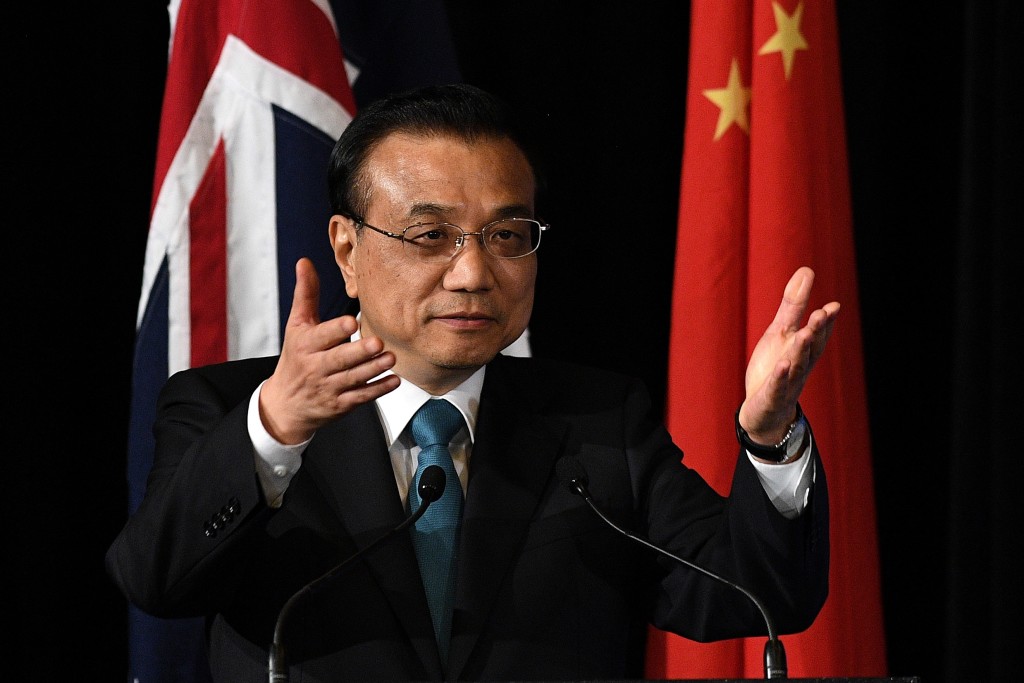Spratlys guns for civilian use–China

Chinese Premier Li Keqiang delivers a speech at the 2nd Australia-China State/Provincial Leaders Forum in Sydney on March 24, 2017. AFP PHOTO
SYDNEY—China is not militarizing the disputed South China Sea, the country’s premier said Friday in Australia, claiming defense equipment Beijing has installed on artificial islands is “primarily” for civilian use.
The South China Sea is a source of growing regional tension, with Beijing insisting it has sovereignty over virtually all the resource-rich waters, which are also claimed in part by several other countries, and deemed international waters by most of the world.
“Even if there is a certain amount of defense equipment or facilities, it is for maintaining the freedom of navigation,” Premier Li Keqiang told a press conference with Australia Prime Minister Malcolm Turnbull in Canberra. “Because without such freedom, or without stability in the South China Sea, the Chinese side would be among the first to bear the brunt of it.”
‘Civilian purposes’
China “never has any intention to engage in militarization in the South China Sea”, he said, adding installations that include airstrips and missile batteries are “primarily for civilian purposes.”
Li said aircraft and ships that transit through the South China Sea were from trading partners with Beijing, “so one can easily imagine how many Chinese interests are at stake here.”
Sydney-based independent strategic consultant Tim Johnston said the nations involved in the dispute, including China and other claimants such as Vietnam and the Philippines, were “being slightly disingenuous.”
“You build up features in the South China Sea in disputed waters, you are likely to have to defend them, which implies some degree of militarization,” he told Agence France-Presse (AFP). “We have the photographs of what looks like military installations on a number of the islands that China occupies.”
Li’s comments that Beijing did not want to restrict navigation in the South China Sea was also to be expected as no country was seeking such an outcome, Johnston said.
Instead, it was China’s need for a veto over activities in the waters that were contentious “in a region where nationalism is very raw and borders are undefined,” he said.
But he added the premier’s remarks could be interpreted as an attempt “not to exacerbate the situation,” at least for the current period. —AFP
For comprehensive coverage, in-depth analysis, visit our special page for West Philippine Sea updates. Stay informed with articles, videos, and expert opinions.